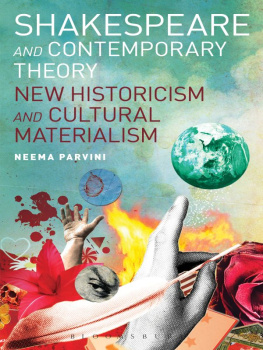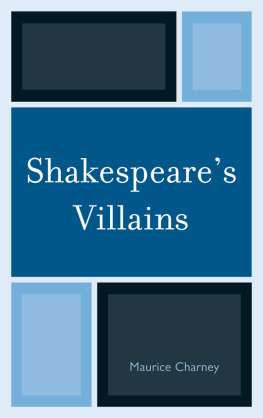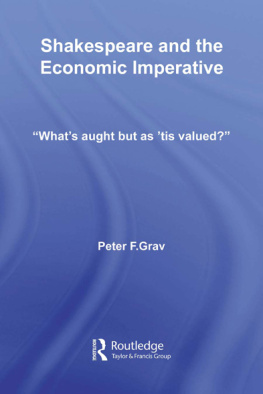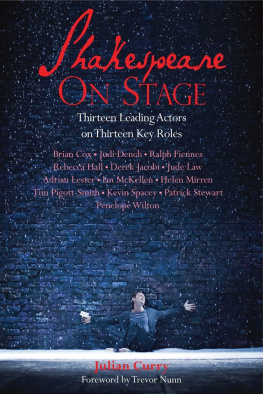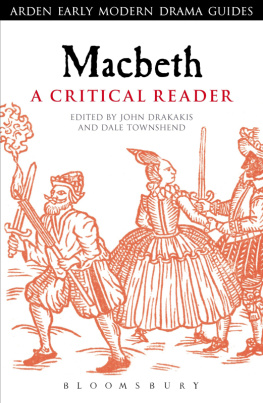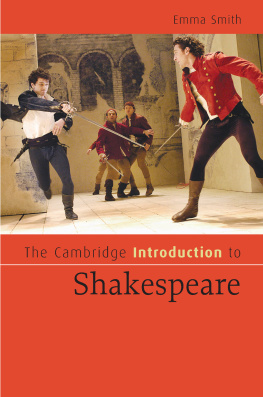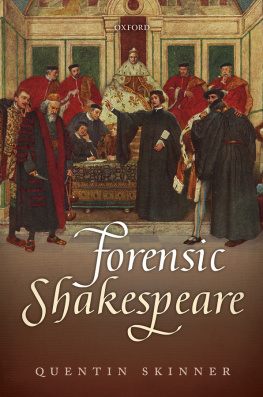Shakespeare William - Shakespeare closely read: a collection of essays: written and performance texts
Here you can read online Shakespeare William - Shakespeare closely read: a collection of essays: written and performance texts full text of the book (entire story) in english for free. Download pdf and epub, get meaning, cover and reviews about this ebook. City: Madison, year: 2011;2012, publisher: Fairleigh Dickinson University Press, genre: Children. Description of the work, (preface) as well as reviews are available. Best literature library LitArk.com created for fans of good reading and offers a wide selection of genres:
Romance novel
Science fiction
Adventure
Detective
Science
History
Home and family
Prose
Art
Politics
Computer
Non-fiction
Religion
Business
Children
Humor
Choose a favorite category and find really read worthwhile books. Enjoy immersion in the world of imagination, feel the emotions of the characters or learn something new for yourself, make an fascinating discovery.

- Book:Shakespeare closely read: a collection of essays: written and performance texts
- Author:
- Publisher:Fairleigh Dickinson University Press
- Genre:
- Year:2011;2012
- City:Madison
- Rating:4 / 5
- Favourites:Add to favourites
- Your mark:
- 80
- 1
- 2
- 3
- 4
- 5
Shakespeare closely read: a collection of essays: written and performance texts: summary, description and annotation
We offer to read an annotation, description, summary or preface (depends on what the author of the book "Shakespeare closely read: a collection of essays: written and performance texts" wrote himself). If you haven't found the necessary information about the book — write in the comments, we will try to find it.
Shakespeare William: author's other books
Who wrote Shakespeare closely read: a collection of essays: written and performance texts? Find out the surname, the name of the author of the book and a list of all author's works by series.
Shakespeare closely read: a collection of essays: written and performance texts — read online for free the complete book (whole text) full work
Below is the text of the book, divided by pages. System saving the place of the last page read, allows you to conveniently read the book "Shakespeare closely read: a collection of essays: written and performance texts" online for free, without having to search again every time where you left off. Put a bookmark, and you can go to the page where you finished reading at any time.
Font size:
Interval:
Bookmark:
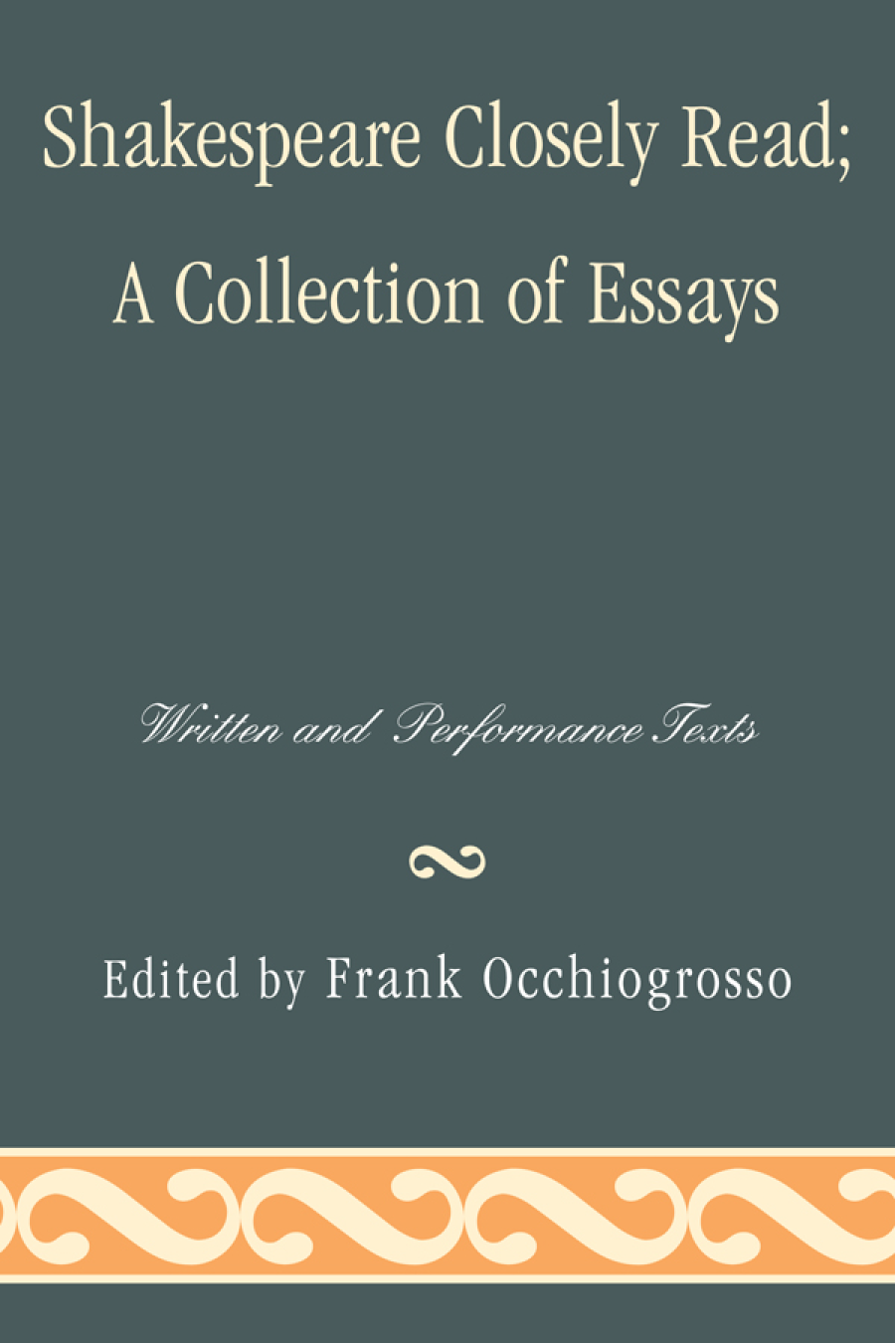
Shakespeare Closely Read; A Collection of Essays
Shakespeare Closely Read; A Collection of Essays
Written and Performance Texts
Edited by Frank Occhiogrosso

Fairleigh Dickinson University Press
Madison Teaneck
Published by Fairleigh Dickinson University Press
Co-published with The Rowman & Littlefield Publishing Group, Inc.
4501 Forbes Boulevard, Suite 200, Lanham, Maryland 20706
www.rowmanlittlefield.com
Estover Road, Plymouth PL6 7PY, United Kingdom
Copyright 2011 by The Rowman & Littlefield Publishing Group, Inc.
All rights reserved. No part of this book may be reproduced in any form or by any electronic or mechanical means, including information storage and retrieval systems, without written permission from the publisher, except by a reviewer who may quote passages in a review.
British Library Cataloguing in Publication Information Available
Library of Congress Cataloging-in-Publication Data
International Shakespeare Conference (2008 : Stratford-upon-Avon, England)
Shakespeare closely read : a collection of essays / written and performance texts edited by Frank Occhiogrosso.
p. cm.
Papers presented at the 2008 International Shakespeare Conference at Stratford-upon-Avon.
Includes bibliographical references and index.
ISBN 978-1-61147-014-7 (cloth : alk. paper) ISBN 978-1-61147-015-4 (ebook)
1. Shakespeare, William, 1561616Dramatic productionCongresses. 2. Shakespeare, William, 1561616Stage historyCongresses. 3. Shakespeare, William, 1561616Film adaptationsCongresses. 4. English dramaEarly modern and Elizabethan, 15001600History and criticismCongresses. I. Occhiogrosso, Frank, 1943 II. Title.
PR3091.I58 2008
822.3'3dc222011014187
 The paper used in this publication meets the minimum requirements of American National Standard for Information SciencesPermanence of Paper for Printed Library Materials, ANSI/NISO Z39.48-1992.
The paper used in this publication meets the minimum requirements of American National Standard for Information SciencesPermanence of Paper for Printed Library Materials, ANSI/NISO Z39.48-1992.
Printed in the United States of America
This book is dedicated to the memory of my beloved father
and mother Salvatore Occhiogrosso ( 19161971) and
Elvira Morello Occhiogrosso Whittier ( 19131993)
A cknowledgments
I wish to thank the International Shakespeare Conference for its invitation to me to propose the seminar from which these essays come, as well as all of my colleagues in that seminar, especially its leaders Jay Halio, John Drakakis, Reg Foakes, and Tom Clayton. Thanks also to Iska Alter and Scott Newstok for their support. I am also grateful to Drew University for its grants to help me in the preparation of the manuscript of this book, especially Jonathan Levin, dean of the College, Wendy Kolmar, associate dean, Richard Greenwald, dean of the Caspersen School of Graduate Studies, and Robert Weisbuch, president of Drew University. Finally I thank all my colleagues in the English Department, my students, and my wife Jane, without whose love and support I would be sweeping the streets of Madison.
Introduction
I
What is close reading? Where does it come from? What does it accomplish or HAS it accomplished? Where is it now? Where, if anywhere, is it going?
Close reading is of course the principal technique or methodology of the New Criticism, which flourished from the 1930s to the early 1960s. The New Critics argued for the primacy of the text rather than the historical or biographical context of the work (or the poem, as some insisted on calling every kind of literary text). And if the text is primary, then close reading is the logical mode of approach: a careful examination of all aspects of the form of the work (hence the term formalism, used by many as a synonym for the New Criticism) but primarily the language of the textimagery, wordplay, figurative language, allusion (mythical, historical, literary), even grammar and syntaxevery aspect of the language of the text that can be seen to go beyond mere definition, to carry the text beyond simple communication. Or to put it another way, the New Critics close reading is designed to bring up into higher relief those formal aspects of the text that justify the statement, made often then and since, that in great literary texts form and content are one. Interpretationreading for meaningis the end of the critical quest, and close reading is the means to that end.
Among the founders and key practitioners of the New Criticism several familiar names loom large. John Crowe Ransom actually coined the term in the title of his book The New Criticism ; the critical philosophy he espoused and endorsed was new by virtue of its difference from the historical and/or biographical approaches that preceded it. But by the time Cleanth Brooks and Robert Penn Warren published their enormously influential Understanding Poetry in 1938, the New Criticism had become more than just a philosophy; it was now a methodology, and one to which close reading of the text was fundamental. Ren Wellek and Austin Warren, William Empson, I. A. Richards, and William Wimsatt and Monroe Beardsley all went further in establishing New Criticism and close reading. But it was perhaps Cleanth Brookss classic The Well Wrought Urn (1947) that established so many of the terms (even if it did not invent them) that came to become part of the standard practice of the mode, some of the things close readers read closely for: paradox, ambiguity, tension, ironyperhaps above all pattern . Taken collectively, the founders of the New Critical practice of close reading fastened reader attention on those patterns in the language that have made us aware of literary languagesor any languagespropensity to go beyond its nominal function simply to describe or communicate. They made us aware of languages propensity for nuance, or for what they made famous as the distinction between denotationthe dictionary definition of the wordand connotationthe nuance, the suggestion, the association of more than just the literal. They made us keenly aware of what words bring with them when we use them, in obvious cases like metaphors, which, because they are comparisons, are automatically making connections, but also in the case of images, which, when connected to other images to form patterns, create in us a sense of the verbal shape of a poem or story. In his famous essay on Donnes The Canonization, Brooks, in the essays very title, The Language of Paradox, makes us keenly aware that language, at least as much as paradox, is and must be at the center of our attention in reading that poemand many others.
And this is an important point about New Criticism and close reading: that some things once considered central have been left behind, but something else persists and is indeed as important to criticism today as it ever was. If we no longer pay as much attention as we once did to paradox, we still pay a good deal of attention to close reading.
In the more theorized critical schools that followed in the wake of New Criticism, as has often been pointed out, close reading is often the starting point for much of the cultural/historical commentary that follows. Many a piece of Feminist criticism begins with those words or phrases that have blatantor subtleimplications for gender that are either intended or unintended by the author. Many a Marxist critique likewise reads language closely for its class implications. Perhaps nowhere is close reading more essential than in Deconstruction, where the tendency of the language to reverse itself, to set up a play of contradictory voices, is notable only through an extremely scrupulous reading of the text. And although Deconstruction, like New Criticism, was rejected by, among others, the New Historicism because it makes of the text a hermetically sealed unit untouched by historical or cultural forces, the first thing a New Historicistor any Historicistdoes is read the text closely in order to establish precisely the language that contains the historical implications that are central to his/her study.
Font size:
Interval:
Bookmark:
Similar books «Shakespeare closely read: a collection of essays: written and performance texts»
Look at similar books to Shakespeare closely read: a collection of essays: written and performance texts. We have selected literature similar in name and meaning in the hope of providing readers with more options to find new, interesting, not yet read works.
Discussion, reviews of the book Shakespeare closely read: a collection of essays: written and performance texts and just readers' own opinions. Leave your comments, write what you think about the work, its meaning or the main characters. Specify what exactly you liked and what you didn't like, and why you think so.


